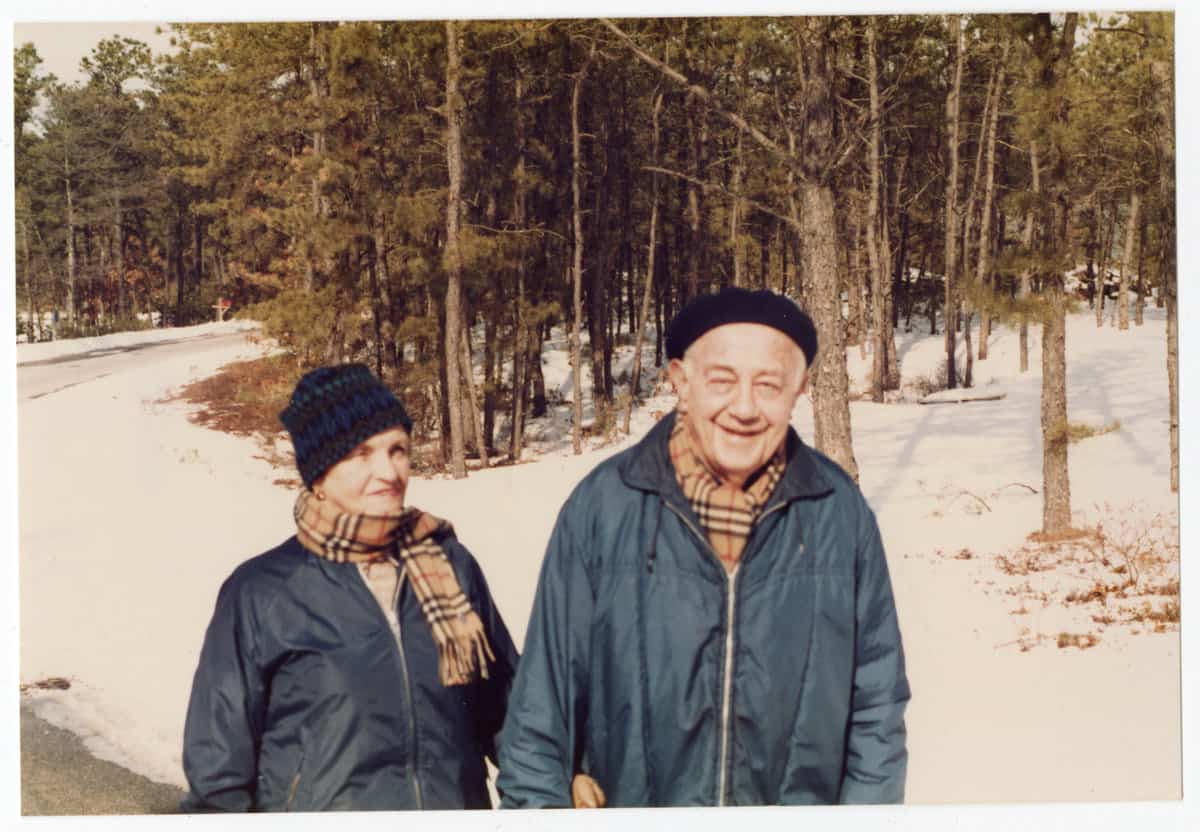By Miriam Entin (née Fried), 2023 Chaskel Tydor Curatorial Intern

באחד בשבת שבעה ימים לחדש מרחשון שנת חמשת אלפים ושבע מאות ושלש לבריאת העולם למנין שאנו מנין כאן [ב]טהערעזיענשטאדט איך הב’ יצחק בן כהר”ר אברהם אמר לה להדא ארמלתא בריינדל בת כהר”ר שמואל הלוי הוי לי לאנתו כדת משה וישראל
On the first day of the week, the seventh day of the Hebrew month of Marcheshvan, the year 5703 after the creation of the world, according to the manner in which we count here [in] Theresienstadt, [the bridegroom] Yitzchak son of Avraham said to this widow Breindel daughter of Shmuel the Levite, “Be my wife according to the law of Moses and Israel…”
The above text is familiar to anyone who has had or attended a traditional Jewish wedding. The first few lines of the traditional ketubah, or Jewish marriage contract, are enlivened with the couple’s names and the time and place of the wedding ceremony. The couple—Otto and Berta. The place—Theresienstadt concentration camp, 1942.
The Couple’s Story
Otto Wolf was born on September 7, 1906 in Prostějov, Moravia (today the Czech Republic). Otto was five years younger than his brother Bruno, who, in 1938, left Czechoslovakia for the United States with his wife Hanna Wolf (née Reiter). Bruno and Otto’s father, Alfred, thought it unwise for Bruno to take their only child, seven-year-old daughter Hella (later Helen), along with him. Thus, she remained in Prostějov with her grandparents and Otto.
Overnight on March 15, 1939 the Nazi government sent 300 troops into Prostějov. The town’s Jews were forced to register and were therefore carefully surveyed, but they were not sent to concentration camps until June and July of 1942. The entire Jewish population of Prostějov—approximately 1,300 people—was deported to Theresienstadt, and from there to Auschwitz and other killing sites including those at Maly Trostenets and Baranovichi. Only a few dozen from Prostějov were to survive the war.
Berta Grossová was born on June 8, 1907 in Ostrava, almost 100km away from Prostějov. She had four sisters and five brothers and her parents owned a kosher restaurant in Prague. Before the war, Berta was married to Otto Wolf’s best friend.
The Jewish community of Ostrava too found itself among the deportees to Theresienstadt, and tragically, Berta’s husband died soon after they arrived.
Otto and Berta’s Ketubah
Otto and Berta’s ketubah is rare, not only as one of the few ketubot from concentration camps that survived the war, but as a document that demonstrates how life was turned upside down by the Nazi regime. The ketubah is written on a plain sheet of paper, composed by someone who—without a reference in the camp—must have had the full text memorized. The ketubah also attests to the tragic death of Berta’s first husband; the bride is identified as a widow.
Still, the ketubah is also a testament to the persistence of Jewish traditions in the face of persecution. Not only did Otto and Berta make sure to procure a lawful Jewish marriage contract signed by two witnesses—Yitzchak son of Shlomo the Kohen and Avraham Moshe son of Aryeh (the latter of whom likely drafted the ketubah text)—but it is written with finesse, in a beautiful script that concludes with traditional artistic lettering.

During and After Theresienstadt
While interned in Theresienstadt, Otto was made manager of the nearby Glimmer Werke, a mica-splitting factory. The women laborers who were forced to work there used extremely fine blades to split large mica cores into individual sheets of specific dimensions for use as electrical insulation. In her memoir Drei Jahre Theresienstadt (My Years in Theresienstadt, 1984), author Gerty Spies – who was interned in Theresienstadt for three years and worked under Otto at Glimmer Werke – described him as generous, comforting, and a lovely person.
Meanwhile, Berta was able to escape the camp and return to Prague with the help of one of her brothers, who managed to send a truck for Berta and smuggled her out of the camp.
As the war came to a close in late 1944, Otto was sent on the last transport from Theresienstadt to Auschwitz, and later from Auschwitz to Dachau where he was liberated by the United States army on April 29, 1945. Otto was so malnourished and ill that he was initially mistaken for dead and discarded with other corpses. From the American Field Hospital in Dachau, Otto wrote letters home informing the family of his survival, expressing worry about his health but optimism for the future, and inquiring after Berta and his niece Helen. These letters are now part of the Museum’s Permanent Collection.
Once he recovered, Otto returned to Prostějov and reunited with Berta. In 1947, Helen was 18 years old — she had succeeded in immigrating to the United States in 1939 shortly after the Nazi invasion of Prostějov. She returned to Czechoslovakia to meet Otto, and in June 1948 the family joined Bruno in New York.

Jeffrey Dunn, who donated these objects of Berta and Otto’s, is the son of Helen and Leo Dunn.